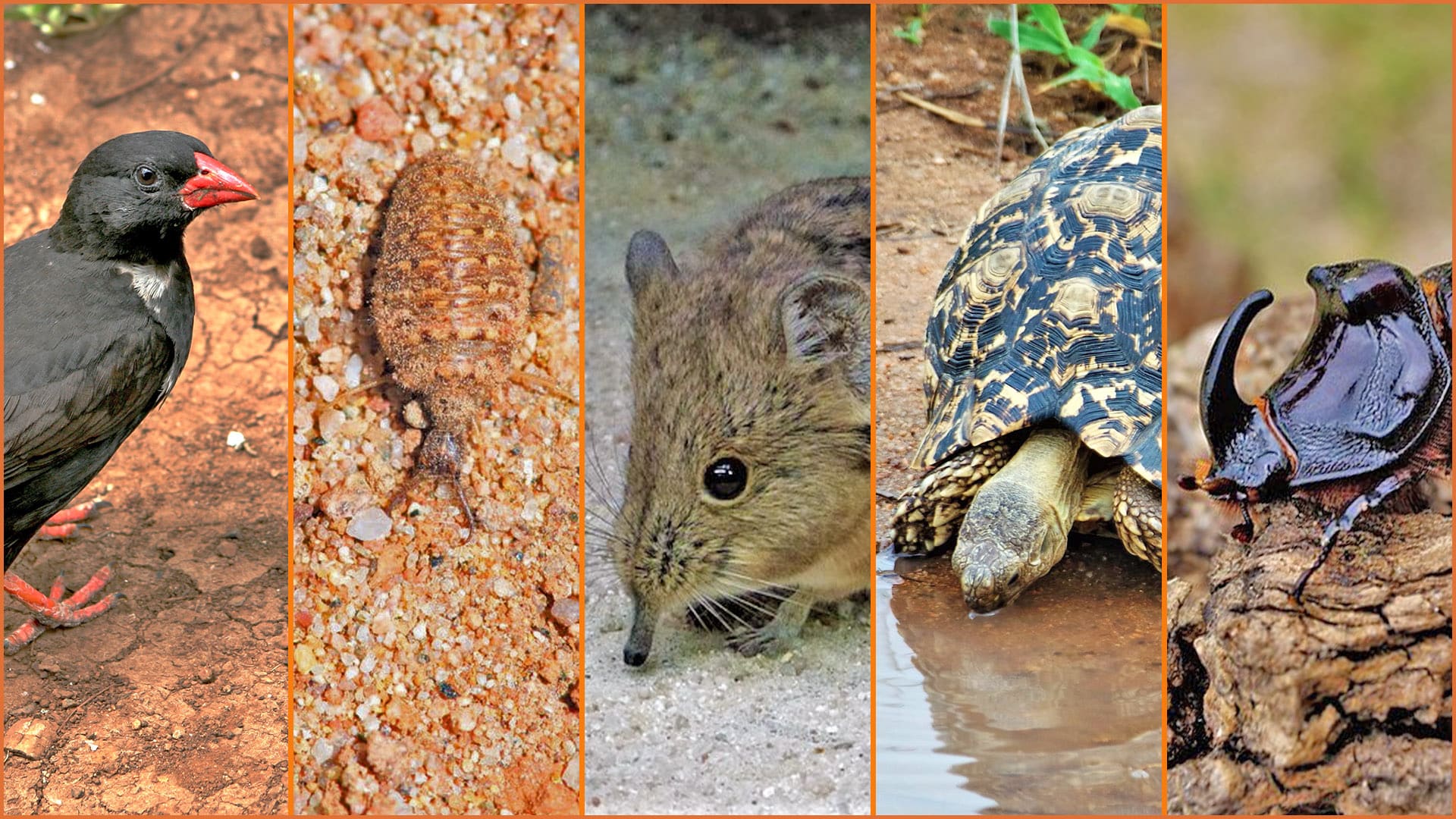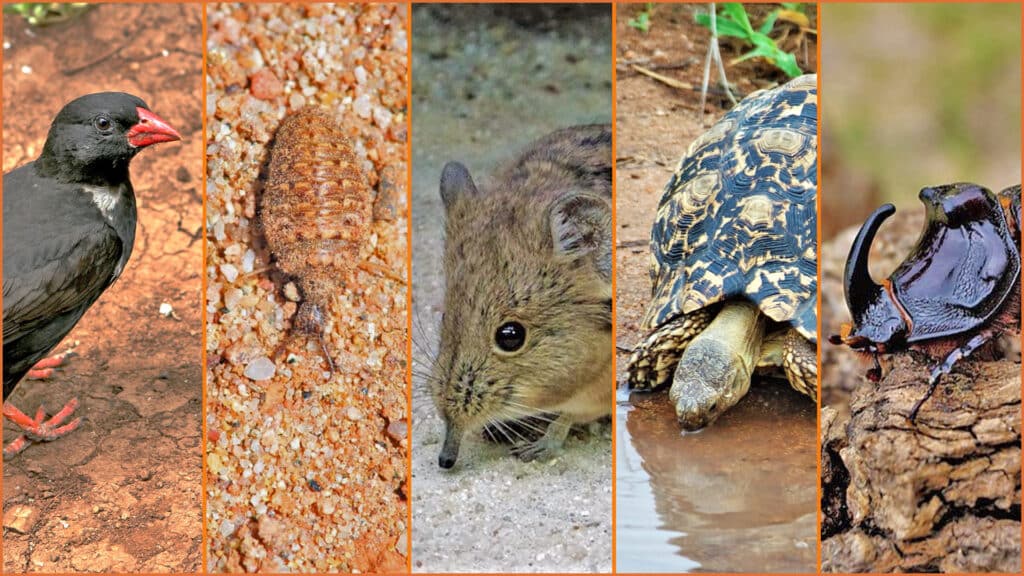
When going on safari we tend to focus on the big 5 sightings and forget about the SMALL 5. In part 2 of this series on Africa’s famous 5, we delve into the what, why, and how.
Africa’s famous SMALL 5 are the leopard tortoise, buffalo weaver, elephant shrew, antlion, and rhino beetle. They share parts of their names with the BIG 5 based on their physical characteristics or behavioral traits.
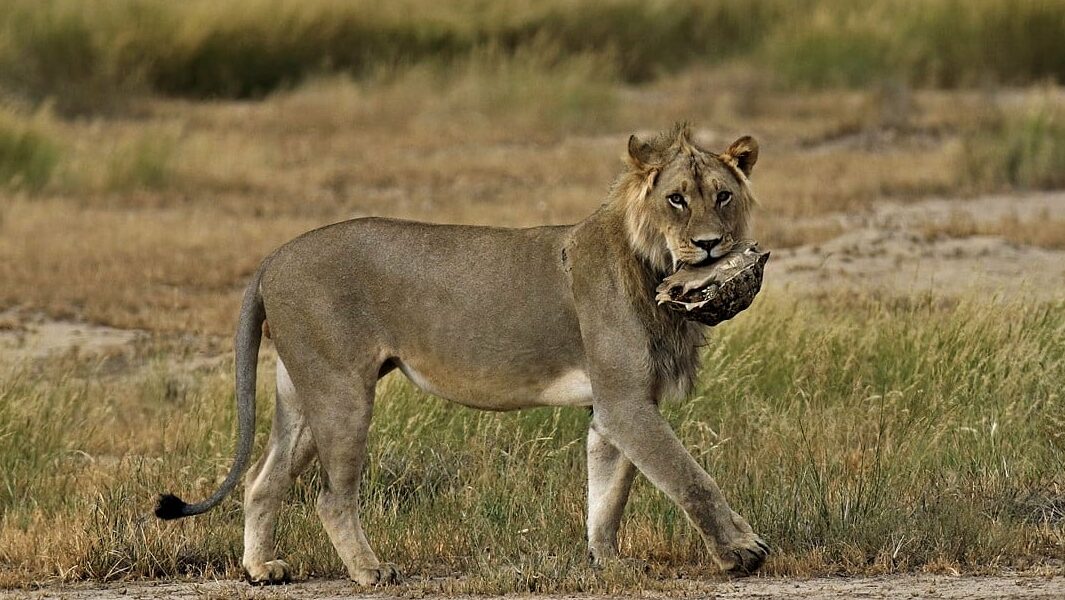
In this series on Africa’s famous 5 – we will be uncovering the big, the small, and the ugly 5!
The Leopard Tortoise
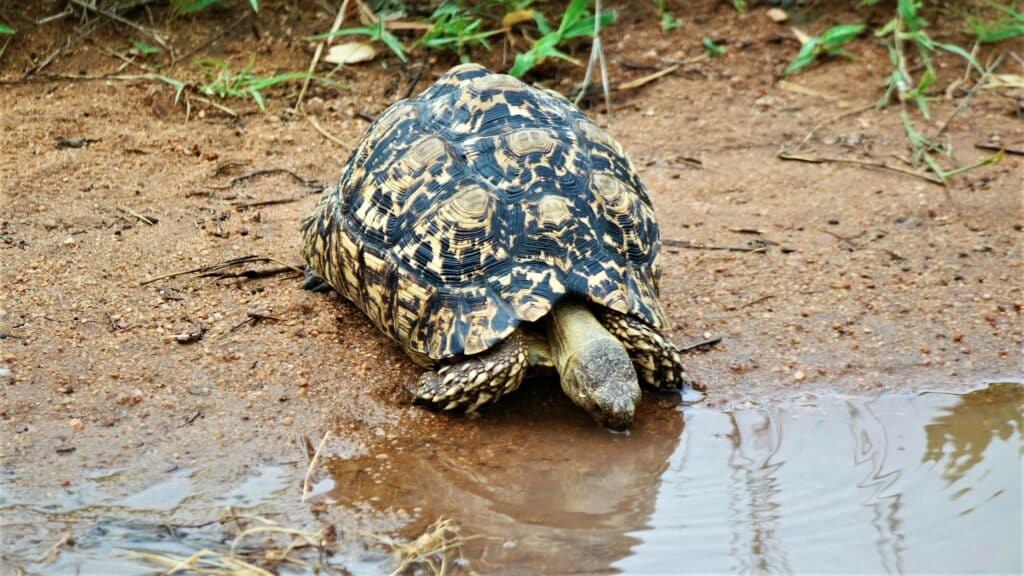
This is the largest of the South African tortoises and the largest among the small 5. They derive their name from the similarity they share with a leopard in terms of patterning. Their shells are golden with black spots that fade as they age. These beautiful creatures can weigh up to an impressive 40 kilograms (88 pounds) but on average weigh 13 kilograms (28 pounds).
Have you tried the Latest Sightings App? Let us know which of Africa’s famous 5 you see in the parks and reserves!
These majestic reptiles are herbivores and love to feed on green vegetation and succulents. They also eat hyena dung for extra calcium – luckily humans don’t have to do that! Sadly, birds of prey, lizards, and snakes will hunt them. Even lions have been known to eat them! Of course, their shell provides some form of protection, but their enemies will do what they can to break the shell – whether it be soaring from a height and dropping them or by prying their shells open using their beaks and teeth.
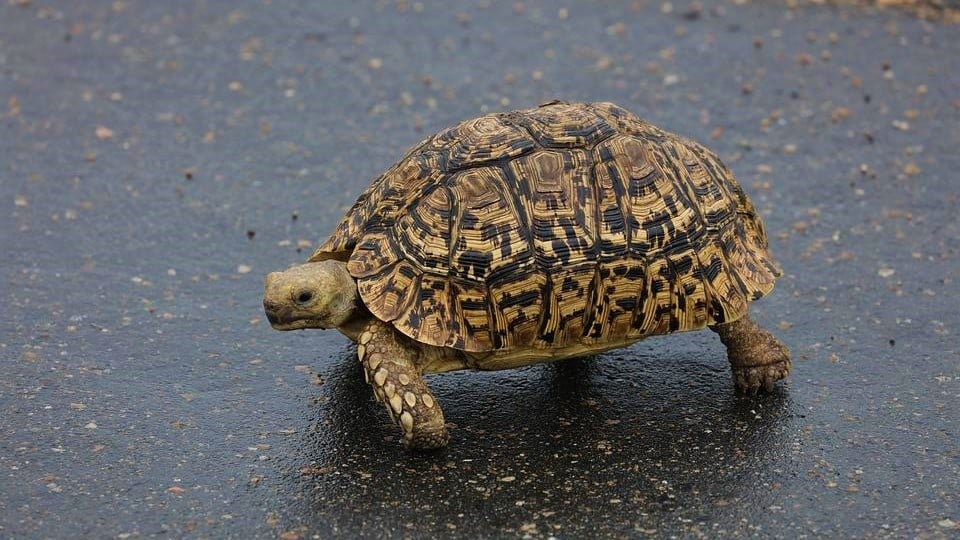
Did you know? Leopard tortoise eggs that are incubated at a higher temperature will hatch as females and at lower temperatures – as males!
They occupy various habitats, have large territories, and can often be spotted in more or less the same areas in the wild. Males will fight one another during mating season by butting and pushing each other. Mating involves pushing and shoving until a female allows copulation. A female will lay approximately 5-30 eggs at a time but can do so in intervals throughout a couple of months.
The Elephant Shrew (Jumping Shrew / Sengi)
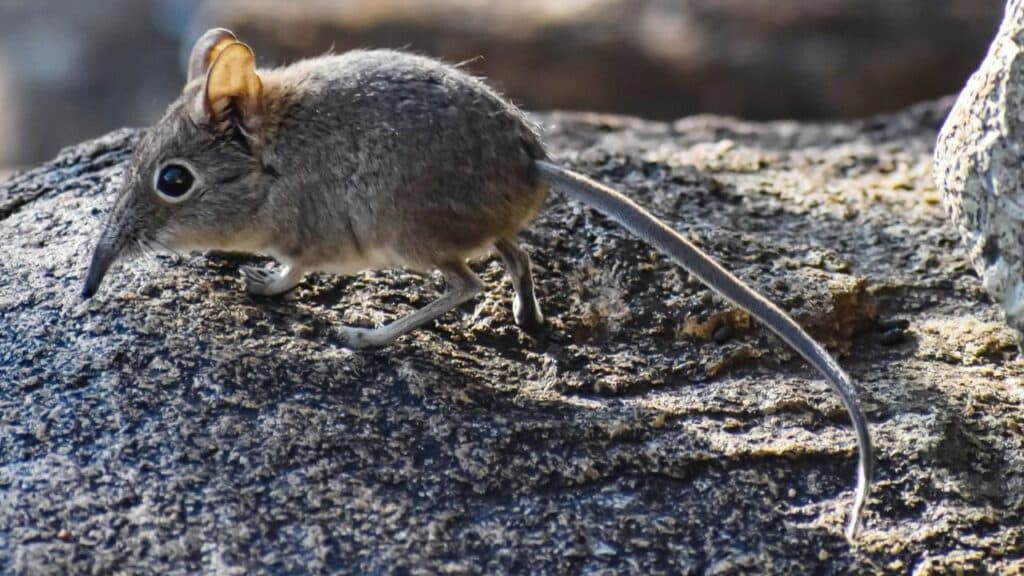
These adorable little mammals derive their common name from their resemblance to elephants, their noses look like elephant trunks. They are seen seldomly because they move very fast and are well camouflaged.
Did you know? Elephant shrews can reach a speed of 28 kilometers per hour (17 miles per hour)!
These cute creatures’ diet consists of insects, millipedes, and centipedes – they love eating creepy crawlies! Elephant shrews are not highly social animals, however, in some cases have been reported to mate for life. They have a short lifespan of only 4 years. They are diurnal by nature, making them predominantly active during the day.
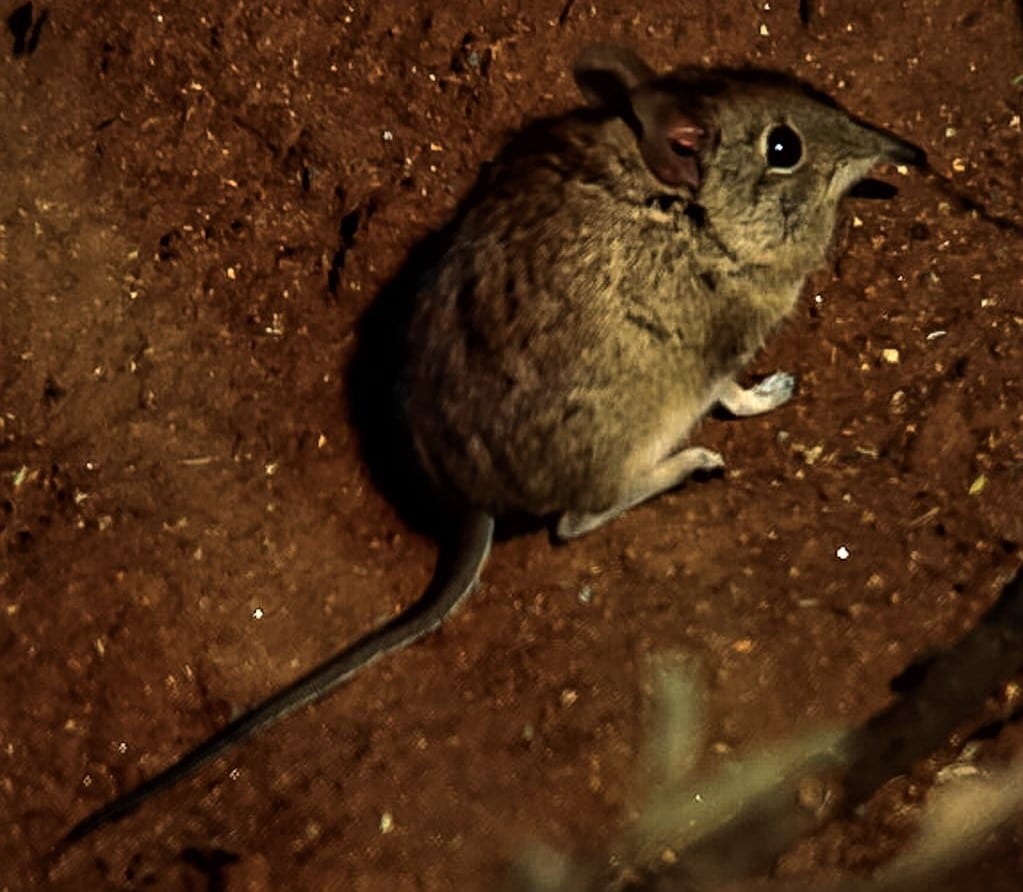
Females carry their young for 45 to 60 days and will give birth to 1 to 3 tiny shrews. Adults are minute. Can you imagine how adorable the babies must be? Relatively well-developed, young shrews will start venturing about after 10 days or so.
Join one of our various WhatsApp Groups to stay updated with real-time sightings in the parks and reserves!
The Rhino Beetle
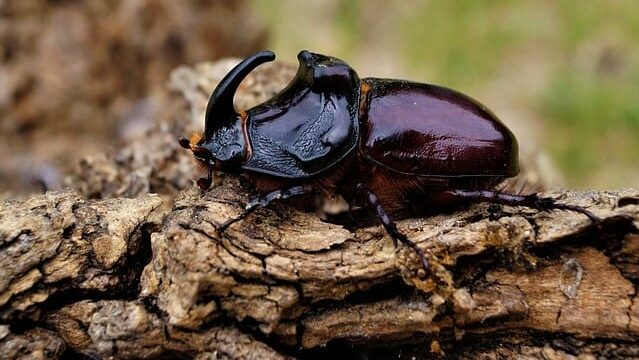
As you can see – these beetles get their name from their impressive little horn which looks similar to that of a rhino. They are harmless to humans and cannot bite or sting. Rhino beetles use their horns for fighting and digging.
Did you know? The size of the horn on a rhino beetle is a good indicator of nutrition and physical health!
They are able to fly, but not very efficiently, because of their size. Rhino beetles’ have been known to lift over 700 times their own weight! Females lay over 50 eggs and the larvae will feed on rotten wood, whereas adults feed on nectar, fruit, and plant sap.
The Antlion
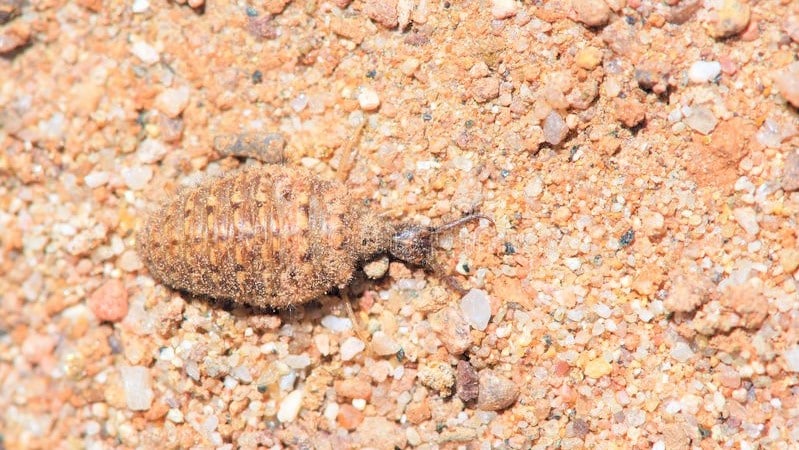
Fascinatingly this insect is named after its hunting methods, they ambush their prey – as do lions. They dig pits to trap ants or passing prey and wait for their victims to walk right in.
We pin thousands of wildlife sightings shared by our community in Kruger and Pilanesberg onto an interactive map. These maps will help you plan the best routes in the parks based on hard data! Our eGuide could help you spot animals in the parks!

Did you know? We also refer to antlions as doodlebugs because they leave doodling trails when moving.
These creatures are nocturnal (active at night) and are rarely seen during the day. As the name suggests, they feed on ants, but will also eat insects. The larva is a vicious predator. Within a few minutes of seizing its prey with its jaws, it injects venom and enzymes into it which causes paralysis. It then sucks out its quarry’s digested insides.
The Buffalo Weaver
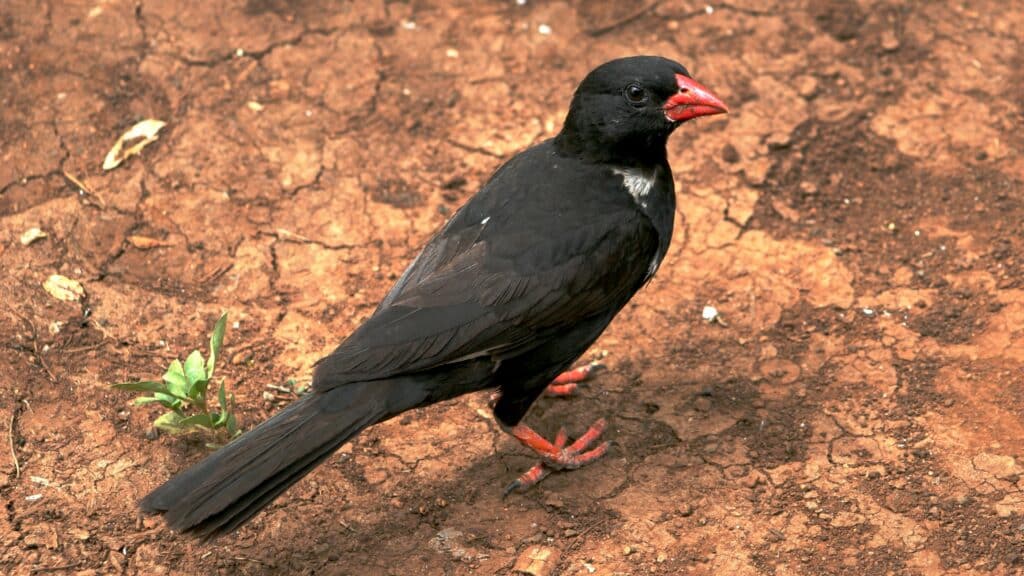
These beautiful birds are known as red-billed buffalo weavers and are one of the noisiest in the African bush. Buffalo weavers are often associated with buffaloes because they feed on insects that are disturbed by herds moving through the grass. They feed on various creepy crawlies from spiders to grasshoppers but also enjoy seeds and fruits.
Did you know? Buffalo weavers prefer areas disturbed by humans and livestock.
They are highly social birds and will live in small family groups and even huge flocks. These weavers are well known for their nests which are easy to identify because of their large size and scraggly nature. Nests are built from enormous twigs and branches high up in thorny trees and can even be found in powerlines. Females lay 2 to 4 eggs and will incubate the eggs for approximately 14 days.

